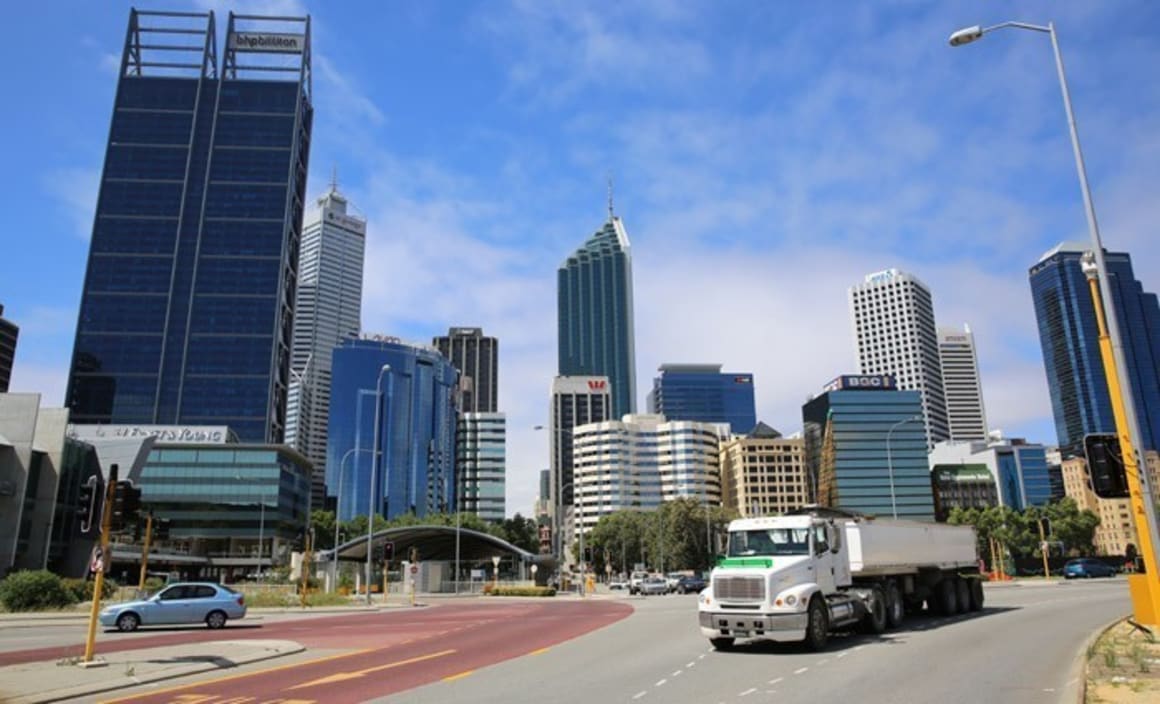Western Australia: A state in transition

A recent poll of 6,000 folk in WA said they could experience mortgage stress if interest rates are ratcheted back up, with housing stress defined as spending more than one third of disposable income on a mortgage.
Usually one might treat such surveys with caution, but a look at data for WA over recent years does seem to back the point up to a certain extent.
Retail turnover, for example, went on a blazing run for half a decade from early 2008, but perhaps consumers are now 'tapped out', with WA retail sales growth having tapered off since late 2012 on a seasonally adjusted basis:

Perth's property markets have been on a very strong run over the past dozen years, and after a prolonged lull which broadly ran from 2009 to 2012, dwelling prices in many areas saw another 10% price uplift in 2013:

Western Australia is now in transition mode as the mining construction boom passes its peak and the less labour intensive production phase of the mining boom kicks in.
It's important to note that in the short term this is likely to result in an uptick in unemployment and a slowing of the economy, which is one of the reasons why our 2014 forecasts were only for a far more moderate 0% to 3% growth, which essentially looks to be about on track at this juncture:

It's worth noting that some of the data reported to date needs putting in perspective.
While the state population growth of +71,300 in 2013 represented a significant slowdown from an romping annualised pace of 3.7% to 2.9% in Q4, this is still by far and away the strongest population growth rate of any state, even though the larger states recorded higher absolute population growth numbers:

Similarly, while the unemployment rate has ticked up from its pre-crisis lows, the unemployment rate is still only 5%, which is comfortably the lowest rate of any state, and a world apart from the southern states of Tasmania and South Australia where unemployment rates are flirting with a 7% level or higher:

Jobs growth in WA has tapered off too of late, but the past decade has been an undeniably strong one in WA:

Mining boom over or changing?
When commentators saw that the "mining boom is over", what they are really referring to is that the mining construction boom of the past decade has now passed its peak and will start to decline, representing a drag on economic growth.
Refer to the national figures for engineering construction below:

Mining boom over or changing?
When commentators saw that the "mining boom is over", what they are really referring to is that the mining construction boom of the past decade has now passed its peak and will start to decline, representing a drag on economic growth.
Refer to the natClearly, however, the whole point of constructing resources projects is to bring reserves to production, and in this sense, the mining commodity exports boom is only in its infancy, with exports to China in particular accelerating by the month.onal figures for engineering construction below:

Take a look at what's happening in WA's Pilbara region for example.
Iron ore cargo shipped out by the Port Hedland Port Authority (PHPA) in the month of May totaled an extraordinary 36.05 Mt (million tonnes), a whopping 30% increase in volumes on the May 2013 figure, with some 85% of that cargo bound for China or Taiwan, and Korea and Japan mopping up the rest:

It was announced recently that on Saturday 7 June 2014 the PHPA shipped out an extraordinary 1,270,271 tonnes of iron ore on only a single tide, crunching the previous record set in April by a whopping 160,000 tonnes.
The last time I checked there are two tides in day, you can see how this could potentially comfortably equate to new monthly and annual throughput records in June when the data are reported in a week's time.
Summary
Western Australia will continue to be Australia's exporting powerhouse in the decade to come.
Clearly, however, there will be a very strong level of interest in how the Chinese economy continues to fare, since it is China's demand for iron ore in particular which is driving the boom (although Port Hedland, for example, also exports salt, copper concentrate and manganese ore to China and Taiwan).
The key data to watch for WA will be the presently low unemployment rate and where that peaks, and the all-important Labour Force figures which are released monthly by the Australian Bureau of Statistics.